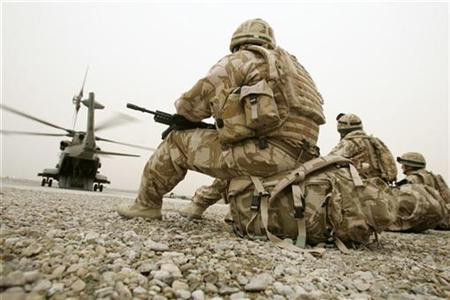MoD Failed to Act on Snatch Land Rover Flaws: Report

Defence heads continued to depute British soldiers in less armoured Land Rovers, known as "mobile coffins," for several years after their own tests confirmed that the vehicles were highly weak and can get attacked from roadside bombs, confidential documents have revealed.
Secret tests of the Army's vehicles conducted in 2005 showed that even if soldiers wore body armour, the Snatch Land Rovers provided little insulation from Improvised Explosive Devices (IEDs), which would split through the "basic level of protection" provided by the vehicles.
Around 37 British soldiers lost their lives as a result of the attacks on Snatches since 2001 - more than 20 of them since 2005. The vehicles are still being used in Afghanistan, the Independent has reported.
A series of internal papers, which formed part of the MoD's assessment of the fleet of vehicles on the frontline conducted six year ago, looked at the lethality of fragmentation against Snatch and pinpointed the scenarios when Snatch is overmatched by the threat. Though, tests showed Snatch performed inadequately, the MoD ignored or withheld the reports, claiming that the "disclosure of such information could prejudice the safety of the armed forces."
The families of soldiers who were killed recently in Snatches have slammed the Army's policy on the vehicles. The Snatch has undergone modification exercise since 2005, but still awaits replacement by a new and better-protected alternative.
Sue Smith, whose son Phillip Hewett lost his life due to a roadside bomb attack on a Snatch patrol in Iraq in July 2005, said she was "absolutely disgusted" to know about the levels of concern laid bare in the documents. "If it was a business, they'd have been done for corporate manslaughter, they'd have been shut down," said Smith.
Official documents to the Iraq inquiry in 2010 showed that ministers had been alarmed that Snatches - initially bought for use in Northern Ireland - needed to be replaced in 2006. But in a "vehicle protection presentation" on March 16 2005 - the second anniversary of the Iraq incursion - the defence technology company QinetiQ reported that Snatch performed poorly but in line with expectations" when attacked by bullets.
A copy of the document, obtained by the Independent on Sunday under freedom of information laws, showed that the investigation concluded that "Snatch as expected is overmatched," and also raised questions over the ability of body armour to protect troops.
On the other hand, another study conducted two weeks later, showed that there was a lack of knowledge behind the armour effects for the Snatch vehicle.
The study refers to test data provided by Defence Intelligence that entails the weakness of the vehicles in the wake of bomb attacks. It warns that Snatch vehicle has also been highly exposed to attacks from IEDs during latest operations.
"As expected, the plate body armour performs better". But it took more than a year before upgraded Osprey plate armour was provided to soldiers in combat - when the MoD spent £16m on 16,000 sets of the armour - and for ministers to admit they needed to buy hundreds of vehicles "with improved protection for deployment to Iraq and Afghanistan," QinetiQ experts have been quoted by The Independent as saying.
An emergency assessment of the Snatch vehicles was not released until 2008. It was released after a rush of protests from the families of soldiers, killed in a series of IED attacks in Afghanistan.
Surprisingly, not a single replacement was made in Afghanistan despite the dangers known by the MoD six years ago. However, in 2010, officers called for an urgent operational requirement for armoured vehicles to replace the Snatches. Foxhound, the replacement, is part of a £200m package of 200 light patrol vehicles ordered by the MoD.
Commenting on the issue, Conservative MP and former Army officer Patrick Mercer said soldiers had called Snatch "the mobile coffin" for years. "Myself and others pointed out [its] inadequacy as far back as 2005; that was only partially addressed by the wearing of extra body armour. It is not acceptable that this vehicle is still being used in the most dangerous of areas," said Mercer.
Jocelyn Cockburn, a solicitor who represents many families of soldiers who lost their lives in Snatch Land Rovers during the Iraq war, said: "The MoD's defence to Sue Smith's case is that there was no particular threat to Snatch associated with IEDs in July 2005 when Phillip Hewett died. It is denied that there was an identified risk to Snatch from IEDs in July 2005."
Meanwhile, an MoD spokeswoman claimed that Snatch was improved four times in 2004 because other better-armoured substitutes were not available. The MoD had ordered over 2,500 new armoured vehicles.
"Commanders have a range of vehicles they can use, but have to balance the level of protection with the tactics they want to employ," she added.
© Copyright IBTimes 2025. All rights reserved.





















